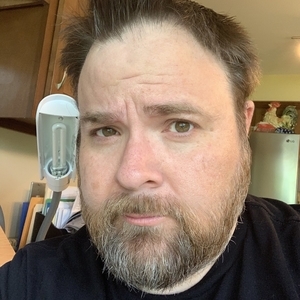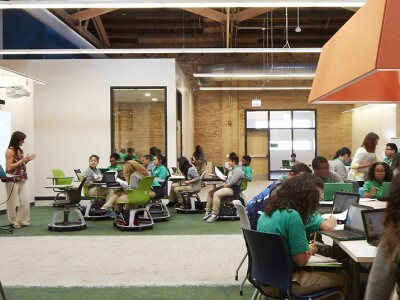Using Gameboards in the Classroom
Topics
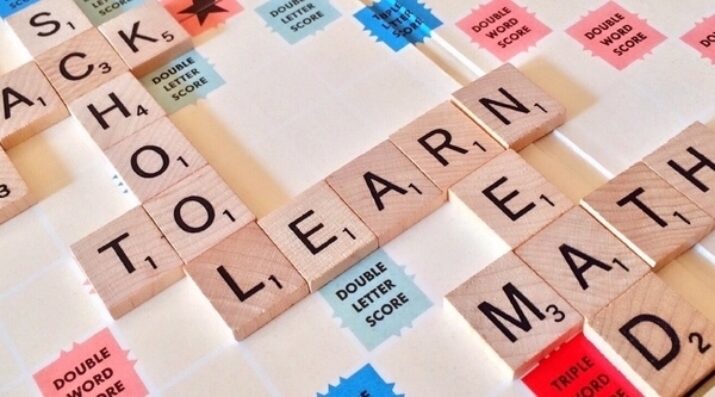
We’ve all had the experience of truly purposeful, authentic learning and know how valuable it is. Educators are taking the best of what we know about learning, student support, effective instruction, and interpersonal skill-building to completely reimagine schools so that students experience that kind of purposeful learning all day, every day.
A game board provides students with a road map to lead their own way through a lesson and take control of their learning.
After 20 years in education and 7 at my current school, I was tired of grading tons of papers, many of which I’d carry home on Friday and inevitably let sit in my bag until I dragged them back to school on Monday. Teaching three preps was having a detrimental effect on my family, my health, and my time. I had to figure out a way to improve student learning, save time, and make grading more authentic for the students. My response to all these challenges was to develop a tool that makes both my and my students’ lives much easier: my gameboard.
The origin of the gameboard started many years before although I didn’t know it at the time. I’ve always considered myself an innovative teacher: I’ve had some form of technology integration in my classroom since I started teaching in 1997. Back then, a colleague of mine managed to get a set of old desktops donated to our science classrooms. These were from some company who had recently updated their technology. They were old, slow, and running Windows 3.1. With these, my students could now create virtual posters, design PowerPoint presentations, and type papers. Later, I moved to a school that had my first ever laptop cart. My students could connect to the internet for the first time. Since then, I've taught high school, college, and online courses in Mississippi and the District of Columbia, where I've experimented with almost every kind of technology-based instructional model. All these experiences taught me that completing papers, handouts, and lecturing in class are not necessary for students to learn.
Then I was introduced to Project Lead The Way. Project Lead The Way relies on simulations, case studies, and students actually doing science rather than listening to the teacher lecture. Even with technology and good curriculum, however, my students often struggled to learn as much of the content as I'd hoped, often because they struggled to keep up.
Combining Tech, Curriculum, and a Self-Paced Roadmap
Three years ago, I had a revelation: If I structured the lesson correctly, students could work through the content at their own pace! The natural next step was the gameboard. If I create the lessons (modules) and organize them in the way in which students need to move through the curriculum, then it is my responsibility to provide them with a road map. Hence, the gameboard was born.
Each morning, students enter the classroom after a friendly greeting from me. After they grab a Do Now and Exit ticket form, they file by an organizer and pick up their color-coded gameboard. The gameboard for each class is a different color, so it is easy to find the right one. Green is for my Principles of Biomedical Sciences course, yellow for my Human Body Systems course, and red for my Medical Interventions course. After quickly checking both their gameboard and the progress board (a whiteboard and a set of magnets with their name on it—see photo below), students complete their Do Now, grab their computer, and begin working. They take ownership of their learning, and I’m there to help them learn.
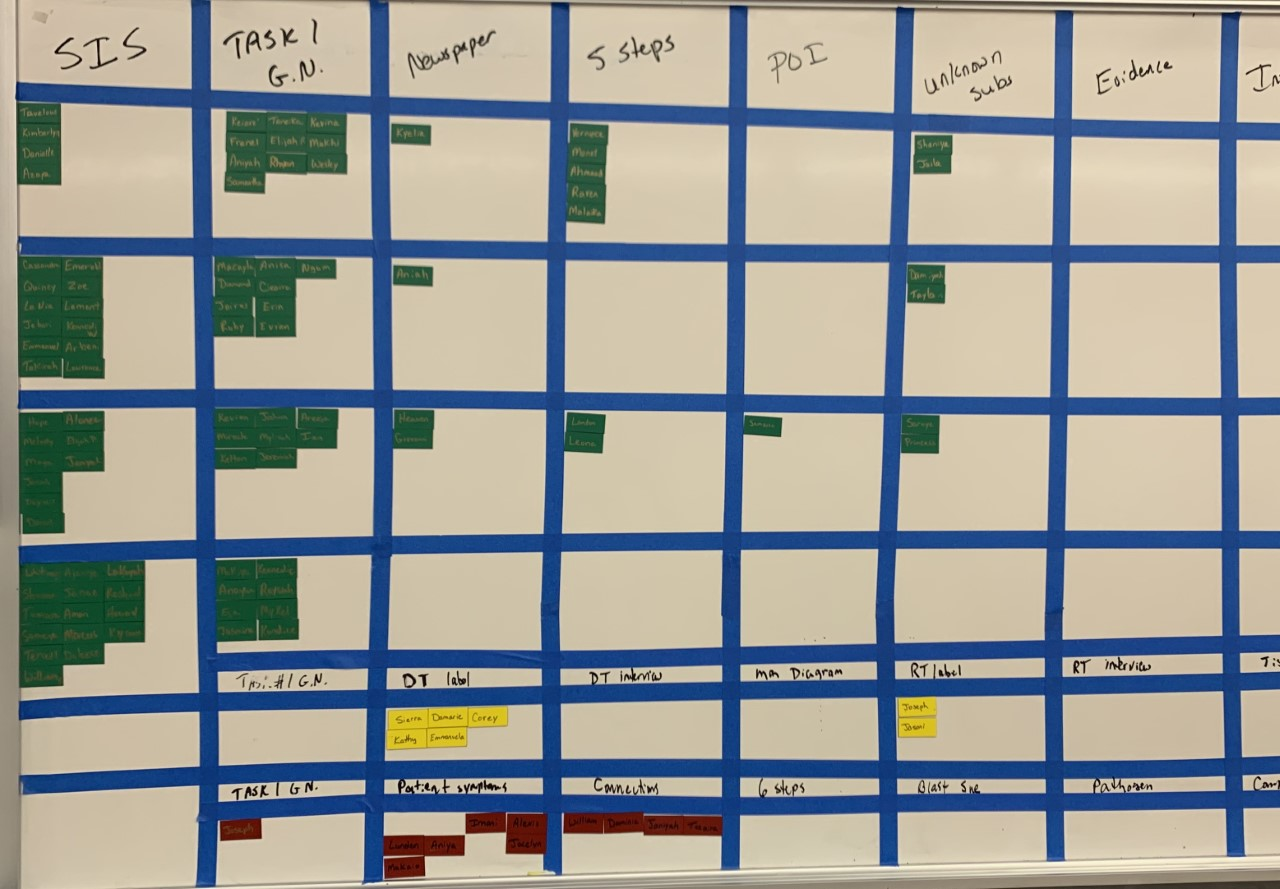
The progress board (Courtesy of Wesley McCammon)
So, what exactly is a gameboard? A gameboard is a road map of the curriculum organized in such a way that activities build on one another through the lesson. The course is divided into units. Each unit is divided into lessons and each lesson has a certain number of tasks. The number of tasks vary by lesson, but is usually two to four.
Completing the Gameboard by Demonstrating Mastery
Students receive a gameboard for each lesson. To fully complete a task, students must demonstrate mastery of the task’s assignments which are organized into boxes on the gameboard. Each box represents an idea and/or concept central to the task and starts with an action: What are you going to do? For example, a box in a gameboard may say,
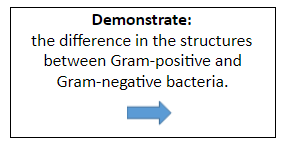
This gives students freedom to master this box in whatever way they decide. They can do this (usually) in a variety of ways. In the past I have had students make a poster, do a Venn diagram, or simply schedule an interview with me. Each box on the gameboard is worth 4 points. I purchased a stamp that includes the date and either a 3 or 4 that I circle and sign depending on their level of mastery. Students can either earn a “3” (Approaching Mastery) or a “4” (Mastery). Anything less than a “3” requires the student to redo the assignment, take another approach, or rethink their ideas. After students earn a “3” or “4,” they can move to the next box on the gameboard.
Since students are on different levels and the normal lecturing and notetaking is done at home by watching a video created and narrated by me, my time in class is free to stamp gameboards, conduct interviews, ask questions, and keep everyone on pace. In my classroom, I have a space that is specifically made for interviews and mastery checks. I call it my “nest.” This space is clutter free and NOT my teacher desk. When a student is ready to get a stamp, they come to the nest and present their work. I check it right there and they either earn a stamp or they must go back and try again.
Once a student receives a stamp, they move themselves over to the next square on the progress board. At the end of each task, there is a wrap-up quiz. Students must score at least 80 percent on the quiz to conclude the task (and complete all tasks to complete the full lesson). Of course, since it is a gameboard, if students have completed all the stamps in a task and scored 80 percent or higher on the task quiz, they earn a “McCam-Buck” that can be redeemed for various prizes and rewards. Students can retake the quiz during class as many times as necessary to earn reach 80 percent; however, before they can retake the quiz, they must write each question they missed and the correct answer and get that checked. When you expect students to score above 80 percent, I’m amazed at how many achieve this score on their first attempt.
Everyone Wins with the Gameboard
I collect the gameboards at the end of each week. I encourage my students to continue working online over the weekends but to leave their gameboards with me. That way, I can record their grades in our online gradebook system before I leave on Friday afternoon, file the gameboards back in the organizer, and move student names around on the progress board so they are ready for the next week. I do not take up any work or papers other than the gameboard. I simply record a 3 or 4 in the gradebook for each assignment.
This approach has made a huge difference not only in my mental health and time management, but also with keeping students on pace, measuring how much they are actually learning and mastering, and reducing down-time in the classroom because there is always a “next task, ” wherever a student may be. There are no more stresses about grading papers. I’m not carrying loads of papers home to grade and I have more time to spend with my family.
It really has been a win-win for me and for the students I teach. Students take control over their learning. Not only do they direct the pace of their learning, but also the style of their learning, the way they complete assignments, and the methods in which they are able to demonstrate mastery.
Do you think an approach like this could work for you? If so, here is a sample of one of my gameboards. Give it a shot!
Image at top by pixabay.

